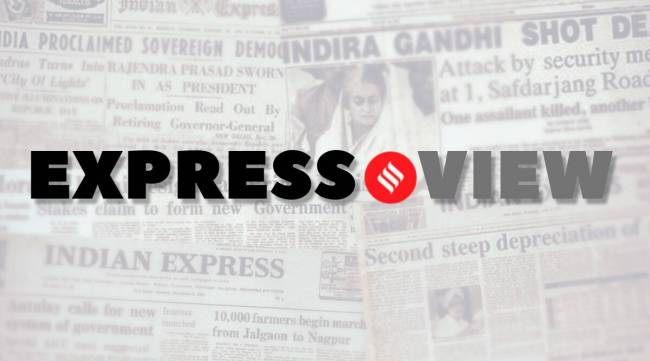Opinion Draft amendments to IT rules: A looming censor
The rules threaten free speech online. Fake news is a problem but a PIB stamp and order to pull down isn’t the solution
 The draft rules fail the smell test on several counts. First, the PIB is a government agency, and it is not the government’s role to play editor.
The draft rules fail the smell test on several counts. First, the PIB is a government agency, and it is not the government’s role to play editor. Should the Press Information Bureau (PIB) or “any other agency authorised by the government” be allowed to order the removal of posts from online platforms, if it deems them to be fake? The draft amendments to Information Technology rules announced last week by the Ministry of Electronics and IT (MeitY) insist that they should be although, as per the Constitution and the Supreme Court, they cannot. Misinformation and disinformation are serious threats in modern democratic societies, of course. In fact, the PIB already flags content as fake news. The draft amendment, however, goes beyond this. If passed, it will allow the government to order digital intermediaries — in essence, any application or platform that is used to host or share content – to take down posts it deems fake, without any forum for appeal or redressal. This goes against the letter and spirit of the freedom of speech and expression enshrined in Article 19 of the Constitution.
The draft rules fail the smell test on several counts. First, the PIB is a government agency, and it is not the government’s role to play editor. Given that almost all media now has a significant digital aspect to its distribution, the proposed rules in effect grant the government blanket powers of censorship. Second, following from the Supreme Court’s verdict in Shreya Singhal v Union of India (2015) — in which the two-judge bench struck down Section 66A of the IT Act as being unconstitutional — errors of fact are not grounds for “reasonable restrictions”. In that verdict, the SC had laid down that take-down orders can only be issued on the grounds laid out in Article 19(2) of the Constitution, which does not refer to the truth or falsity of statements. Further, the Court had gone on to say how that controversial section of the IT Act had a “chilling effect” on free speech. The proposed amendments to IT rules threaten to bring back that draconian spirit into digital governance. Third, the PIB’s record thus far in “flagging” misinformation has been far from perfect. As a report in this newspaper showed, there have been several instances — including reports concerning notices issued by state governments, police forces and the Intelligence Bureau — that the PIB flagged as “fake news” where it later turned out to be mistaken. When the government is merely flagging and labelling content, such a mistake is reversible. If it issues takedown orders under a legal architecture that provides no room for appeal, the same errors become constitutionally untenable.
In the aftermath of the objections to the proposed changes in rules, MeiTY minister Rajeev Chandrashekhar has said “these amendments will also be put through open consultations – to reflect, discuss and deliberate on these amendments or any other such effective means through which we can prevent misinformation/ patently wrong information”. The government must stand by this assurance. It must not use fake news as an excuse to arrogate to itself powers it doesn’t have under the Constitution — to be a censor.




